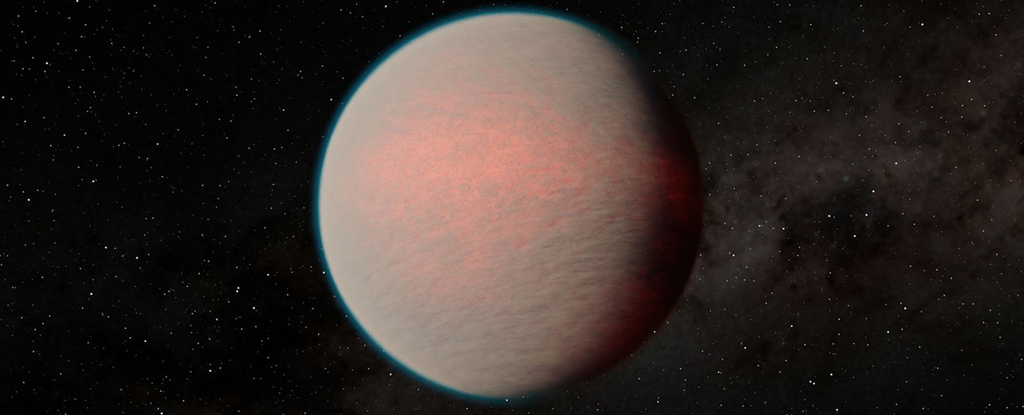NASA’s James Webb Space Telescope (JWST) has made progress in its study of exoplanets, which are planets beyond the Solar System, including the TRAPPIST-1 system that hosts seven Earth-sized worlds. One of the most common exoplanet types are mini-Neptunes, which are widespread throughout the Milky Way. In this regard, the astronomers have chosen their targets judiciously, and the JWST has been used to study Gliese 1214 b (GJ 1214 b), a mini-Neptune that orbits a red dwarf star about 40 light-years away in the Ophiuchus constellation.
Details
GJ 1214 b is about eight times more massive than Earth and has a radius of 2.75 Earth radii. The planet is completely enshrouded by a thick, steamy atmosphere that has undergone significant evolution during its history. It is the first mini-Neptune found that has an atmosphere and only the second one where the mass and radius were determined. In the past, the planet’s thick layer of haze or clouds had hidden further details.
The JWST’s powerful MIRI instrument was used to observe the planet as it orbited its star, providing a heat map that showed both day and night sides, illuminating more details of its atmosphere. The temperatures of GJ 1214 b shifted from 279 to 165 °C, indicating the presence of heavy molecules, such as H2O and CH4. The presence of ample hydrogen in the atmosphere is not reflective of the composition of the host star it formed around. Instead, it either lost a lot of hydrogen, if it started with a hydrogen-rich atmosphere, or it was formed from heavier elements to begin with, more icy, water-rich material.
According to the authors, GJ 1214 b formed further from its star than it is now and was sent inward, closer to the red dwarf it orbits, thereby losing some of its atmosphere. The authors write that it is difficult to discern exactly what other chemical components the planet might have, but that hydrogen cyanide, a by-product of methane, could be present.
This study is the first detailed look at one type of exoplanet and can lead astronomers to conclusions, but with only one data point, any conclusions are preliminary. Fortunately, mini-Neptunes are plentiful, and the JWST is in the early years of its mission. “By observing a whole population of objects like this, hopefully, we can build up a consistent story,” said Kempton, the lead author.



Leave a Reply